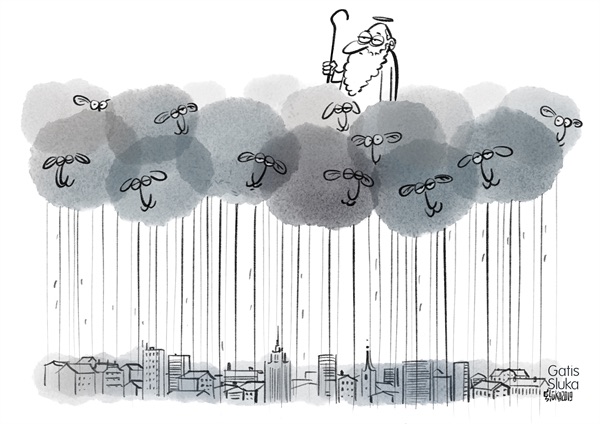Water in the West
The Desalination Plant Is the Solution for Thirsty Arid Regions

I read the article “Santa Barbara Seals 50-Year Deal to Sell Water to Montecito,” which was a nice piece of work, thank you!
As a lifelong environmentalist, I feel that all students and residents in the Western States (Nebraska on westward) should read Cadillac Desert (1986) by Marc Reisner. His book talks about how water is everything in the West and how politics and land schemes have influenced where and who gets water and at what price. The negative environmental impacts of all the various water projects (e.g., California State Water Project) are staggering! Furthermore, people are inherently selfish which shows in the riparian rights (established during the 1849 Gold Rush) and the drilling of private wells into aquifers.
The California Water Board indicates that no one can own the water itself, but one has the right to use it on one’s property. Here is a direct quote from the Water Board’s website describing Ground Water Rights:
In most areas of California, overlying land owners may extract percolating ground water and put it to beneficial use without approval from the State Board or a court. California does not have a permit process for regulation of ground water use. In several basins, however, groundwater use is subject to regulation in accordance with court decrees adjudicating the ground water rights within the basins.
The California Supreme Court decided in the 1903 case Katz v. Walkinshaw that the “reasonable use” provision that governs other types of water rights also applies to ground water. Prior to this time, the English system of unregulated ground water pumping had dominated but proved to be inappropriate to California’s semiarid climate. The Supreme Court case established the concept of overlying rights, in which the rights of others with land overlying the aquifer must be taken into account. Later court decisions established that ground water may be appropriated for use outside the basin, although appropriator’s rights are subordinate to those with overlying rights.
A major problem with private wells is that it becomes an arms race for the deepest well since the deepest well will get water while adjacent wells run dry. The above law is supposed to address this, yet it is difficult to monitor. At the same time aggressive aquifer pumping can also cause other issues like saltwater ingress and freshwater pollution, as has been happening in the Salinas Valley near Monterey. Furthermore, the surface in the Central Valley has been sinking over time because of all the farmers pumping “free” water out of the aquifer, and when their wells run dry, they just keep drilling deeper.
Because of all the above water issues I am in favor of having the desalination plant here at the South Coast; especially after all the electricity to run it will be from 100 percent renewable sources.
S.B. Channelkeeper’s Executive Director Kira Redmond appears to object to the desalination plant out of principle in that it has a negative impact on the ocean. I do understand her concern on the impact on sea life and agree that we need to aggressively step up water reuse. That being said, I highly recommend that she read Marc Reisner’s book in that it really illuminates all the negative impacts of water being piped from Northern California (Oroville Dam) to us and the major problem of reservoirs (silting over time and impact on fish migration). Reducing our use of water as much as possible is the most important first step, yet ocean water can and should be a primary source of our drinking water, in my opinion.
It is a big issue that Montecito uses 85 percent of its water for irrigation and plants. I was not aware of this until now. It sure would be nice if our neighbors could reduce this lopsided usage of a very scarce resource.
After reading Cadillac Desert it should become clear that there are too many of us living in the deserts and semiarid regions in the West. Since no one wants to depopulate where we live — even if it is a good idea — we have to realize that water is worth more than oil, gold, other minerals, and even some water thirsty agricultural products. Yet we have the advantage of the ocean at our doorsteps and it really needs to be a serious consideration as a water source for any community in California that is within 50-100 miles of the ocean.
I for one object to more reservoirs being built and the damming of more rivers in the Sierras or far northern California and southern Oregon and then piping water all the way down here. The negative environmental impacts of those water sources outweigh the negative impact of the desalination plant in my mind.



